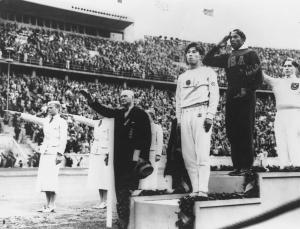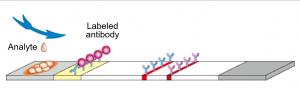What time is it now? When shall we meet?
Everyday, every moment, exists on a boundless extension. There are no bridges or obstacles to cross when moving from this moment to the next. However, the way we perceive the extension is broken down to units. This is because of the concept of "time”. This "time" does not exist physically, but takes an absolute part of our daily lives. The object that we turn our eyes on most frequently during a day will be a clock, not the sky nor our family. So it would not be an exaggeration to say that time and clocks dominate our entire day, week, month, year, and even life.
How was the unit of time made? Simply put, why is a day 24 hours and an hour 60 minutes? Let's look at the birth of time divisions that dominate our day, and the clock, a device that physically visualizes it.
Birth of Time Units
Long ago people observed that the sun and moon tilted 12 times a year as the seasons changed. They adopted this method and divided each day and night into 12 hours, so a day became 24 hours. The history of the number 60 dates back to the Mesopotamian civilization. Babylonians used the decimal system as a basic unit and considered 60, the common multiple of 10 and 12, to be magical.
However, although people discovered these numerical concepts long ago, there were time gaps until humans introduced the concepts to actual measurement: the concept of time back then was not sound and measurement technology was lacking.
History of Clocks
1. Clocks using natural power sources
-Sundial
The first clock in human history was a sundial called "gnomon", invented by an Egyptian around 4000 BC. It identifies time through a shadow formed by a stick in the middle of the ground. However, since the time is measured with shadows, sundials have the disadvantage of having to watch the shadow for a long time, and most of all, it is impossible to know time on cloudy or rainy days. Having in common with today’s clock is that the circle surrounding the stick is divided into twelve units.
-Water Clock
The water clock compensated for the shortcomings of the sundial: it measures time by the height of the water surface. A water clock consists of bowls with small holes that water passes through, with the amount of water accumulated in the bottom of the bowl giving the time. The first water clock, called Clepsydra, was invented in Greece around 500 BC, and was actually more of an instrument than the clock we think of today. Back then, there were two versions of the clock: a large version which could hold water measured for 24 hours, and a small version that was used to measure shorter amounts of time like a few hours, such as a guard's shift.
2. From Medieval Age to Modern Times: Mechanical clocks that adapted power sources.
- Weight Clocks
The closest type of mechanical clock to that of today's was a weight clock invented in 1364 by a man named Henri de Vick (France). This had a slightly different principle from today's mechanical clocks: as the weight falls, the drum connected to the weight rotates, and this rotation gear of the drum conveys power to the needles. These clocks were installed in church buildings and towers. But their critical fault was that despite their huge size, they were inaccurate, some being more than 30 minutes off the correct time. Therefore, most people at that time relied more on the sound of a ringing bell from the town tower. In fact, the English word "clock” was originally used to mean "bell," reflecting that the clock was designed to replace the duty of the bell to notify people the time of the day.
- Pocket Watch
In 1510, the first portable clock powered by a spring was invented by a German locksmith, Peter Henlein. The first portable clock was not commonly used due to its large round size and weight, but later served as a breakthrough catalyst for clock technology.
- Pendulum Clock
In 1583, Galilei of Italy discovered and proved isochronism, which means that the period of the pendulum is constant regardless of amplitude. By 1656, Christiaan Huygens, a Dutch scientist, applied it to clocks; Huygens found that the pendulum must actually swing on a cycloid curve in order to follow isochronism. He later developed an accelerator to allow the pendulum to swing on the cycloid curve and then applied it to the clock. The pendulum clock developed with significant accuracy, being less than 20 seconds off each day.
- Wristwatch
In 1676, Robert Hooke of England discovered how to reduce the amplitude of the pendulum, which allowed clocks to operate more precisely. Since then, minute hands appeared on the clock. Later, as George Graham modified the anchor escapement in 1715, the clock became more sophisticated and compact, becoming closer to today's portable clock, the wristwatch. At that time, a portable clock was a pocket watch with a metal lid, and women carried it in their pockets or fans as a decoration.
The first wristwatch was custom-made for pilot Alberto Santos-Dumont by Cartier in 1904. Back then, wristwatches were originally used by pilots and soldiers; they gradually became popular with the public as well. The frequent wars during the early 20th century influenced the combination of portability and sustainability for watches and triggered the development of a strong wristwatch that could be easily carried in wartime. Like those of the pilots’ watch, the divers' clocks also became increasingly sophisticated. In 1926, Rolex released the Oyster Case, a waterproof watch inspired by when an oyster closes its mouth. As mentioned in these few examples, extreme conditions of sports and war were what made watches so compact and durable.
3. Contemporary Clocks
With advances in modern technology, the mechanisms of power sources and components used in watches (clocks) have also diversified. There are various types of power sources now, such as clocks that move with sound waves, quartz clocks that use crystal vibrations, and atomic clocks that use atomic or molecular coherent frequencies. Parts and materials used for watches have also advanced, for example, the use of alloys that are not affected by temperature changes.
Han Seunghyeon seunghan7019@naver.com
<저작권자 © 홍익대영자신문사, 무단 전재 및 재배포 금지>





